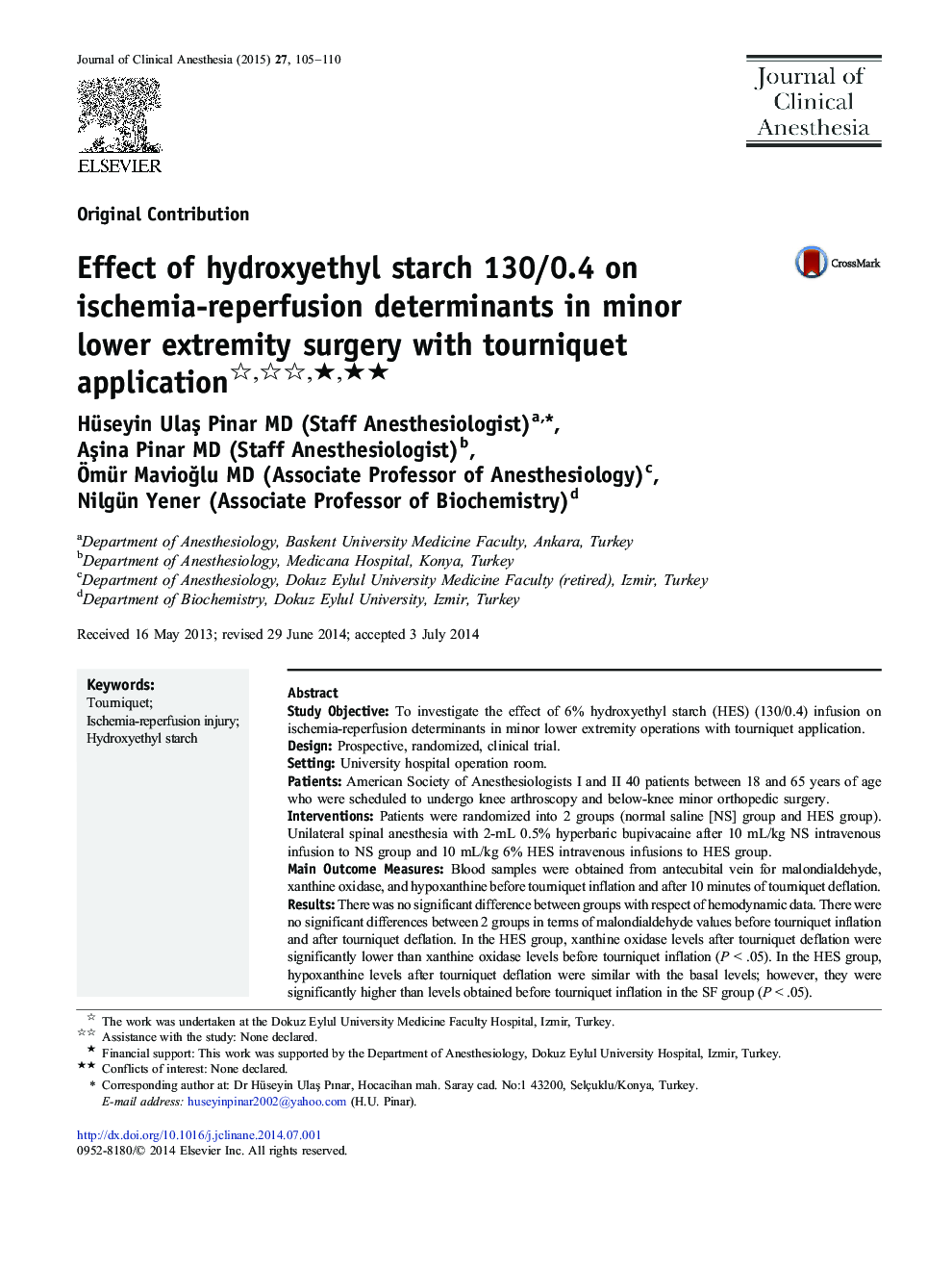| کد مقاله | کد نشریه | سال انتشار | مقاله انگلیسی | نسخه تمام متن |
|---|---|---|---|---|
| 2762416 | 1150712 | 2015 | 6 صفحه PDF | دانلود رایگان |
• We investigate the effect of 6% hydroxyethyl starch (HES) infusion on ischemia-reperfusion determinants in lower extremity operations with tourniquet application.
• We administered 6% HES or normal saline before tourniquet application.
• HES infusion may be beneficial for reduction of tourniquet-associated ischemia-reperfusion injury.
Study ObjectiveTo investigate the effect of 6% hydroxyethyl starch (HES) (130/0.4) infusion on ischemia-reperfusion determinants in minor lower extremity operations with tourniquet application.DesignProspective, randomized, clinical trial.SettingUniversity hospital operation room.PatientsAmerican Society of Anesthesiologists I and II 40 patients between 18 and 65 years of age who were scheduled to undergo knee arthroscopy and below-knee minor orthopedic surgery.InterventionsPatients were randomized into 2 groups (normal saline [NS] group and HES group). Unilateral spinal anesthesia with 2-mL 0.5% hyperbaric bupivacaine after 10 mL/kg NS intravenous infusion to NS group and 10 mL/kg 6% HES intravenous infusions to HES group.Main Outcome MeasuresBlood samples were obtained from antecubital vein for malondialdehyde, xanthine oxidase, and hypoxanthine before tourniquet inflation and after 10 minutes of tourniquet deflation.ResultsThere was no significant difference between groups with respect of hemodynamic data. There were no significant differences between 2 groups in terms of malondialdehyde values before tourniquet inflation and after tourniquet deflation. In the HES group, xanthine oxidase levels after tourniquet deflation were significantly lower than xanthine oxidase levels before tourniquet inflation (P < .05). In the HES group, hypoxanthine levels after tourniquet deflation were similar with the basal levels; however, they were significantly higher than levels obtained before tourniquet inflation in the SF group (P < .05).ConclusionHES infusion may be beneficial for reduction of tourniquet-associated ischemia-reperfusion injury; however, further large-scale studies are needed to fully elucidate its mechanism.
Journal: Journal of Clinical Anesthesia - Volume 27, Issue 2, March 2015, Pages 105–110
